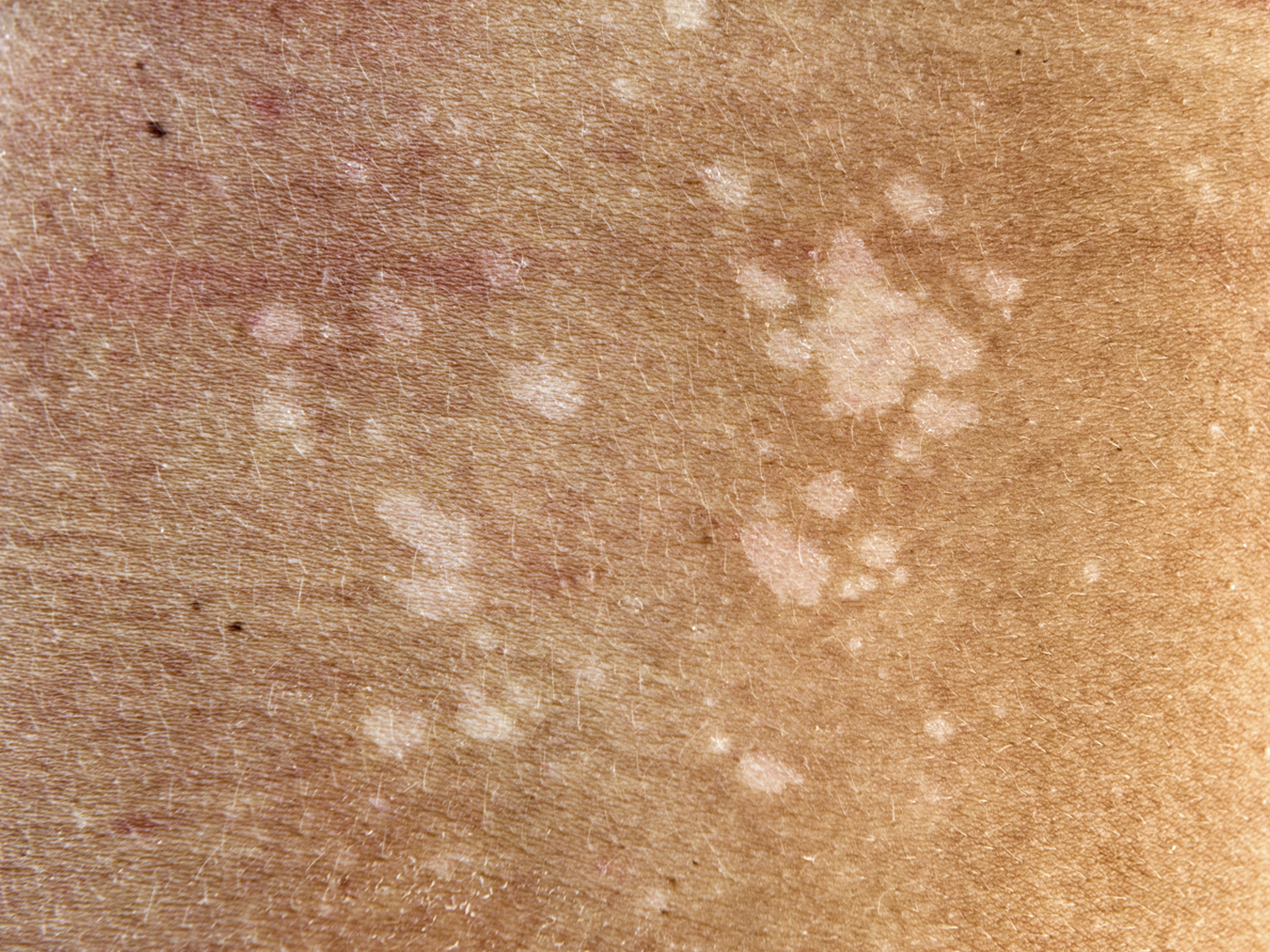Tinea Versicolor: Stubborn Skin Condition?
I’ve been dealing with tinea versicolor for about five years, and it seems to be spreading. It’s on my chest, armpits, arms, neck, inner thigh, navel area, and shoulders. I don’t want to use antifungals. Diluted essential oils have worked before but didn’t get rid of the whole thing. I found something called Terrasil. Is that good? What can I do to end this?
Andrew Weil, M.D. | June 7, 2011

Tinea versicolor is a common skin infection stemming from overgrowth of a fungus that normally lives on the skin. It is harmless but can be annoying. Tinea appears as areas of scaly, discolored skin that tend to be more noticeable after exposure to the sun. The patches of discoloration can be white, pink, tan or dark brown. Sometimes, they itch. Tinea versicolor is most common among adolescents and young adults with oily skin and tends to come on in hot, humid weather, as a result of excessive sweating, during periods of hormonal change, and when the immune system can’t defend the skin against overgrowth of the organism.
Typically, these infections are treated with applications of non-prescription antifungal lotions, creams, gels or shampoos. If those products don’t work, oral antifungal drugs may be prescribed.
I do not recommend using Terrasil, which is a colloidal silver product. Contrary to claims made for it, colloidal silver is not a substitute for antibiotics, or any other medications. It is true that silver is an effective germicide with some usefulness in medicine, but it can accumulate in the body and cause a much more disfiguring skin condition called argyria, marked by bluish-gray pigmentation, especially around the nose and mouth. This color change cannot be reversed. Long-term use of oral silver products has led to neurological problems including seizures, as well as kidney damage. It can also interfere with the absorption of some drugs including tetracycline antibiotics and thyroid hormone supplements.
I suggest trying tea tree oil extracted from the leaves of Melaleuca alternifolia. This works as well as or better than pharmaceutical antifungal products. Apply a light coating to the affected area two or three times a day, and continue to apply it for two weeks after signs of the infection have disappeared to make sure the fungus is eradicated. Be sure to select brands that are 100 percent tea tree oil. In addition, consider scrubbing the affected areas with Selsun Blue shampoo and an exfoliating pad such as a “Buf-Puf,” which can provide an antifungal effect. Adding some raw garlic to your diet might also help, because of garlic’s potent antifungal activity.
Andrew Weil, M.D.









